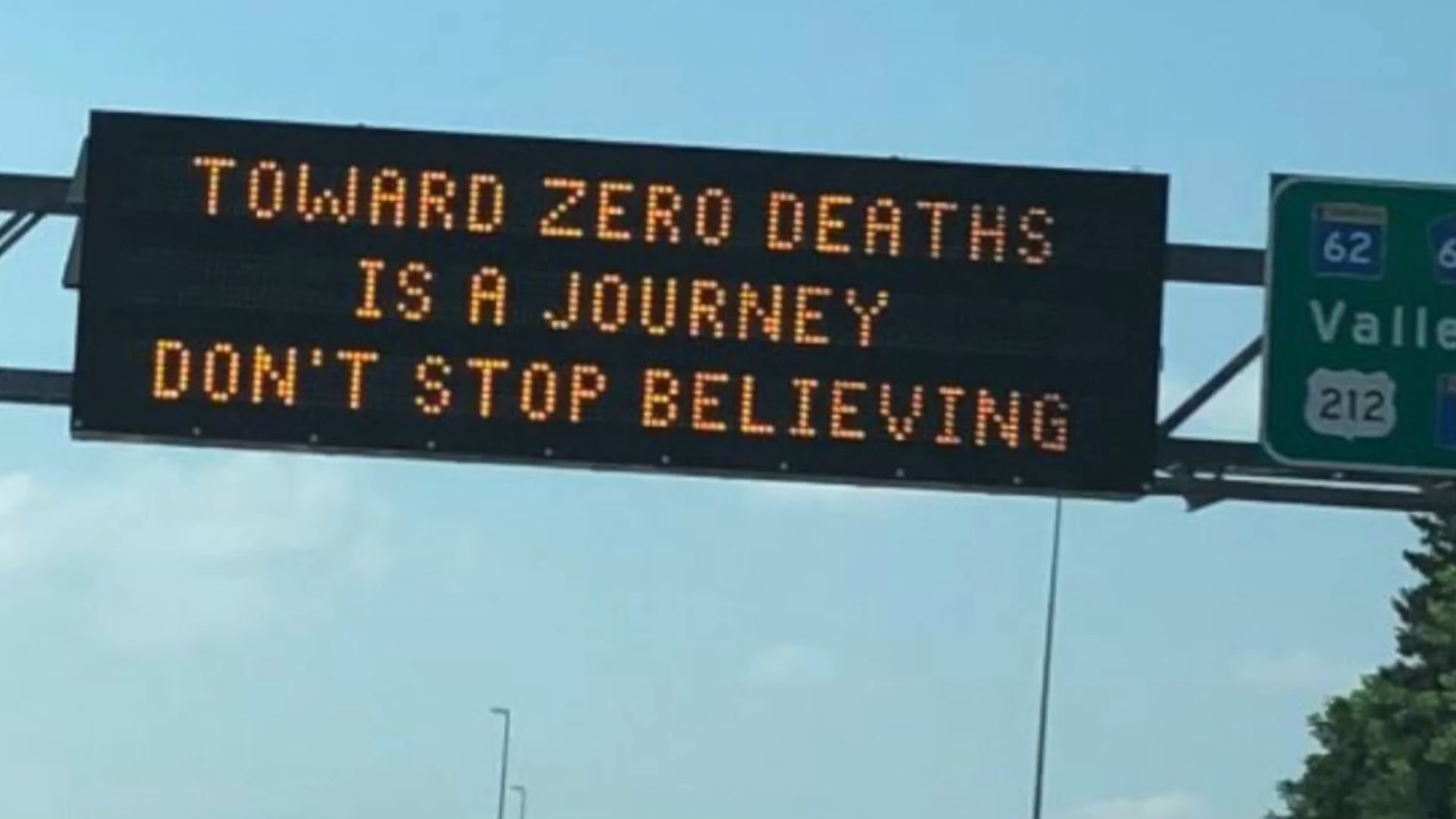

If you’ve ever looked up from the road to read a sign that tells you how many fatalities impaired driving caused on that particular stretch of highway, you’ve likely increased your risk of getting into an accident yourself. That’s according to a study that was published on Thursday and reported on first by the Wall Street Journal. It claims an increase in the rate of accidents following a large sign warning drivers of the risks—4.5 percent in roughly six miles after them. That spike doesn’t sound crazy, but it allegedly results in 2,600 crashes and 16 deaths a year in the state of Texas.
Researchers say they accounted for several variables before reaching this conclusion. Indeed, from the outset, the team claims they intended to prove the effectiveness of these devices; however, they were proven wrong. It seems to boil down to cognitive overload, something that’s brought on as drivers try to process the risks of driving. In turn, this prevents them from being as alert as they should be.
The data was collected over a period of several years in Texas, specifically, although the researchers say that it’s applicable to any state which utilizes large signs to notify drivers of death tolls.
In addition to the increased rate of accidents and fatalities, these signs cost the state of Texas more than $380 million. The Lonestar State is also just one of 28 states that use these devices, and research concludes the national cost is more than seven times that. Refraining from using them to display death tolls, then, would be a low-cost way to improve traffic safety. At present, they’re said to increase the likelihood of a crash the same way bumping the speed limit up three to five miles per hour would.
One potential solution suggested by the researchers is that “traffic safety ‘nudges’ need to be carefully designed and positioned to avoid backfiring.” Moving them to highway on-ramps, for instance, could be beneficial. The authors also say that simply turning these signs off would logically help as well. After all, WSJ notes that in 2021, the U.S. Federal Highway Administration said that displaying statistics like highway fatalities was not an appropriate way to use these signs. Texas phased them out that same year, though many states still use them.
If the information is actually useful, then the signs should be kept, it’s noted. Signs that display things like road closures or road work likely help prevent accidents. However, asking drivers to reflect on the number of fatalities caused by drunk driving, for instance, apparently isn’t a good use of their time behind the wheel. If anything, as the study suggests, it makes drivers less attentive and more likely to harm themselves or others.
Got a tip or question for the author? You can reach them here: peter@thedrive.com